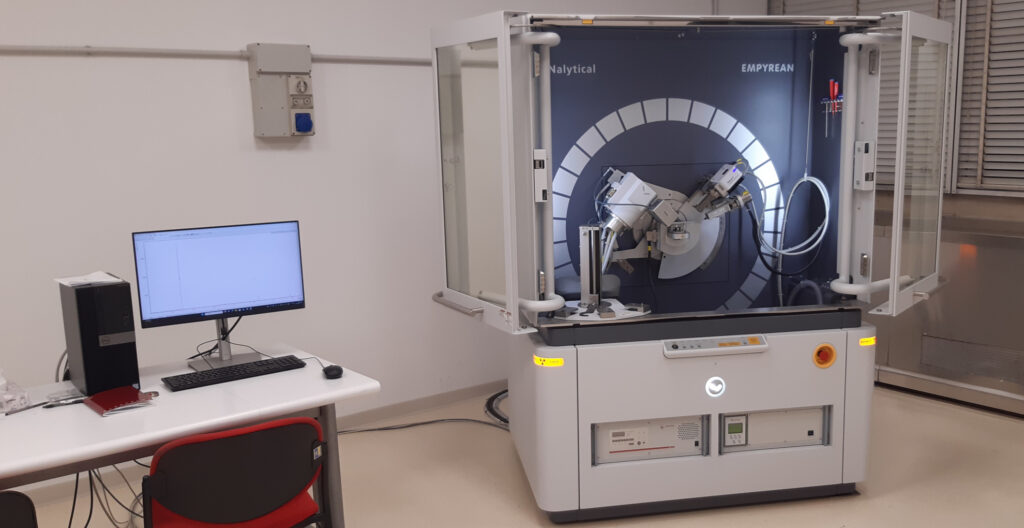Multipurpose X-ray Diffractometer
General Information
Multipurpose diffractometer for the collection of wide-angle (WAXS) and small-angle diffraction (SAXS) data on bulk materials, powders, thin films, epitaxial layers, in reflection, grazing incidence and transmission geometry, on flat samples or capillaries. The data collected can provide information on crystal structure, microstructure of materials, and thickness of thin layers. An Eulerian Cradle is also available, allowing the investigation of preferred orientation and residual stress on bulk and thin film samples.

Tecnical description
Multipurpose diffractometer equipped with a 240 mm radius theta-theta goniometer and a Cu X-ray tube. The diffractometer allows the collection of wide-angle (WAXS) and small-angle (SAXS) diffraction data on bulk materials, powders, thin films, epitaxial layers, in reflection and transmission (for transparent samples). The data collected are useful to get information on crystal structure, microstructure, thickness of thin layers. The incident radius optics include a monocromator mirror allowing to completely remove the Cu Kbeta radiation, programmable divergence slits and masks for the analysis of flat samples, and a parabolic mirror for diffraction experiments on rotating capillaries . An Eulerian Cradle is also available, allowing to investigate preferred orientation and residual stress on bulk and thin film samples. The Eulerian Cradle can be equipped with an Anton Paar DHS1100 domed hot stage, allowing measurements in non-ambient conditions, vacuum and controlled atmosphere up to 1100 °C. The diffracted beam path is equipped with two detectors: a proportional point detector coupled with a parallel beam collimator, useful for measurements on grazing angle geometry and reflectometry; a solid state 2D detector made of 256×256 pixels covering a solid angle of 3°x3° is also available, allowing fast data collection and the ultrafast reciprocal space mapping mode for the structural and microstructural characterization of epitaxial layers.
Research areas and applications
Structural and microstructural characterization of materials. The obtainable information includes crystal structure. cell parameters, crystalline domain size, microstrain, residual stress, texture.
Science highlights
Experimental team

- Filippo Agresti
- CNR-ICMATE
- Researcher
